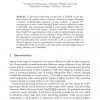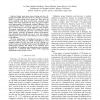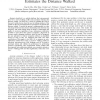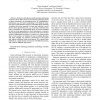EWSN
2007
Springer
14 years 3 months ago
2007
Springer
Abstract. Event-driven operating systems such as TinyOS are the preferred choice for wireless sensor networks. Alternative designs following a classical multi-threaded approach are...
PERCOM
2010
ACM
14 years 3 months ago
2010
ACM
—Mobile phones are becoming commonplace for consuming Internet content and services. However, availability, affordability, and quality of the supposedly ubiquitous cellular netwo...
PERCOM
2010
ACM
14 years 3 months ago
2010
ACM
—This paper studies economic models of user participation incentive in participatory sensing applications. User participation is the most important element in participatory sensi...
PERCOM
2010
ACM
14 years 3 months ago
2010
ACM
Abstract—People waste many hours driving each day. Although unavoidable, this time can be very boring to motorists. Similar to people taking mass transit who often pass the time ...
PERCOM
2010
ACM
14 years 3 months ago
2010
ACM
PERCOM
2010
ACM
14 years 3 months ago
2010
ACM
—Some current and future pervasive data driven applications must operate in ”extreme” environments where endto-end connectivity cannot be guaranteed at all times. In fact, it...
PERCOM
2010
ACM
14 years 3 months ago
2010
ACM
— In this paper, we present Orchestrator, an active resource orchestration framework for mobile context monitoring. Emerging pervasive environments will introduce a PAN-scale sen...
PERCOM
2010
ACM
14 years 3 months ago
2010
ACM
Abstract—In pervasive computing, localizing a user in wireless indoor environments is an important yet challenging task. Among the state-of-art localization methods, fingerprint...
PERCOM
2010
ACM
14 years 3 months ago
2010
ACM
—AutoGait is a mobile platform that autonomously discovers a user’s walking profile and accurately estimates the distance walked. The discovery is made by utilizing the GPS in...
PERCOM
2010
ACM
14 years 3 months ago
2010
ACM
—Modern mobile phones enable absolute positioning based on GPS or WiFi. However, incremental positioning based on dead reckoning is an interesting source of complementary informa...




